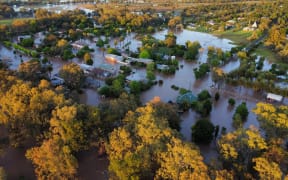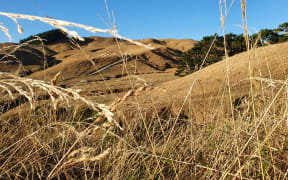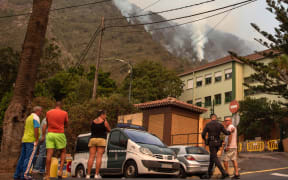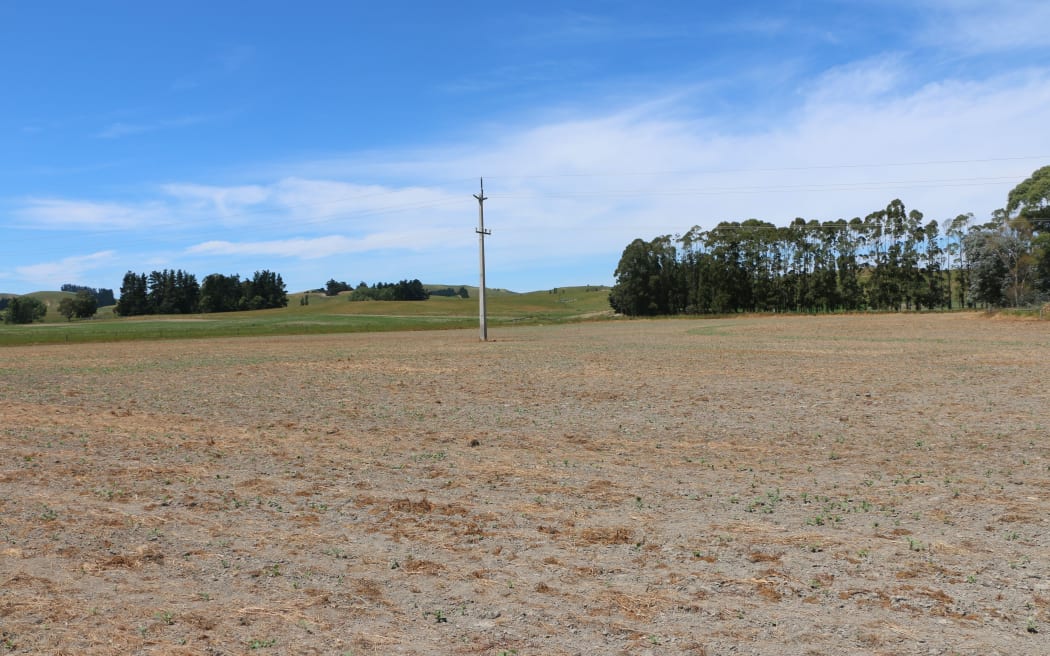
El Niño brings with it more frequent, dry, westerly winds. Pictured is a dry paddock in Cheviot in the Hurunui District early last year. Photo: RNZ / Maja Burry
Farmers are bracing for hotter, drier and windier months ahead as the return to El Niño heralds possible drought conditions for parts of Aotearoa.
NIWA predicts El Niño will be declared in the coming weeks, bringing with it more frequent, dry, westerly winds.
In Wairoa, there had been no rain for a few weeks. Swamp grass and duck weed was adding some greenery to the land.
But Wairoa Federated Farmers branch chair Allan Newton said that did not keep their stock fed.
"If we dry out suddenly and the ground goes hard, nothing will grow and we'll have no spring flush, which will make life a hell of a lot more difficult. So the sooner the grass starts to grow, the sooner we get a little bit of just very light rain, the better off we will be."
It was crucial they got a boost, he said.
"Lambs are all being born and calves are being born, and if we don't get that spring flush, their mothers won't be able to make a lot of milk to be able to feed them well, and there won't be much feed around for the parent sheep to look after the young ones."
Feed levels were already run down due to slips and the wet season and farmers would have to buy feed in if they did not get growth.
But Newton said some could not get it to their stock in the backcountry because of track closures.
"They know how to live and how to get the best for their stock. They'll just keep moving them and finding feed, finding something for them.
"If you're a blade of grass and you're green, I'd say your life is on the line."
Ocean waters east of the date line have been unusually warm. NIWA meteorologist Chris Brandolino said that was a tipoff that El Niño was on its way.
️ An El Niño-like pattern is expected in the 2nd half of September, with strong & frequent westerly winds ️
— NIWA Weather (@NiwaWeather) September 7, 2023
It could linger for weeks or months as El Niño intensifies, resulting in persistent drier than normal conditions in the North Island & northern + eastern South Island. pic.twitter.com/KplQbHIvz2
"We have the ocean at the altar, waiting for the atmosphere to show up and when the atmosphere does show up, they will be coupled. They will become one.
"The atmosphere is nearly there. It's walking down the aisle, about to show up to the altar, so we've already seen these El Niño-like impacts and that is more west, southwest winds."
He expected the weather would take quite the turn over the next couple of weeks, indicating the theme for the rest of the year.
"We know the average outcome of El Niño, but no El Niño is average. There's variations, there's different personalities for everyone. But there are some themes that we can draw from that, from those historical events."
They included generally westerly winds that were drier and more intense or persistent than usual, and below normal rainfall for most of the country, except the West Coast in Te Waipounamu.
That boosted the risk for drought, with the east coast of both islands expected to be in the firing line.
"We're talking the same places that had really wet conditions in the first half of 2023. Tai Rāwhiti Gisborne, Hawke's Bay, Coromandel, Northland, Auckland. Those areas could be in store for something quite opposite of how 2023 started as we look ahead to the remainder of this calendar year."
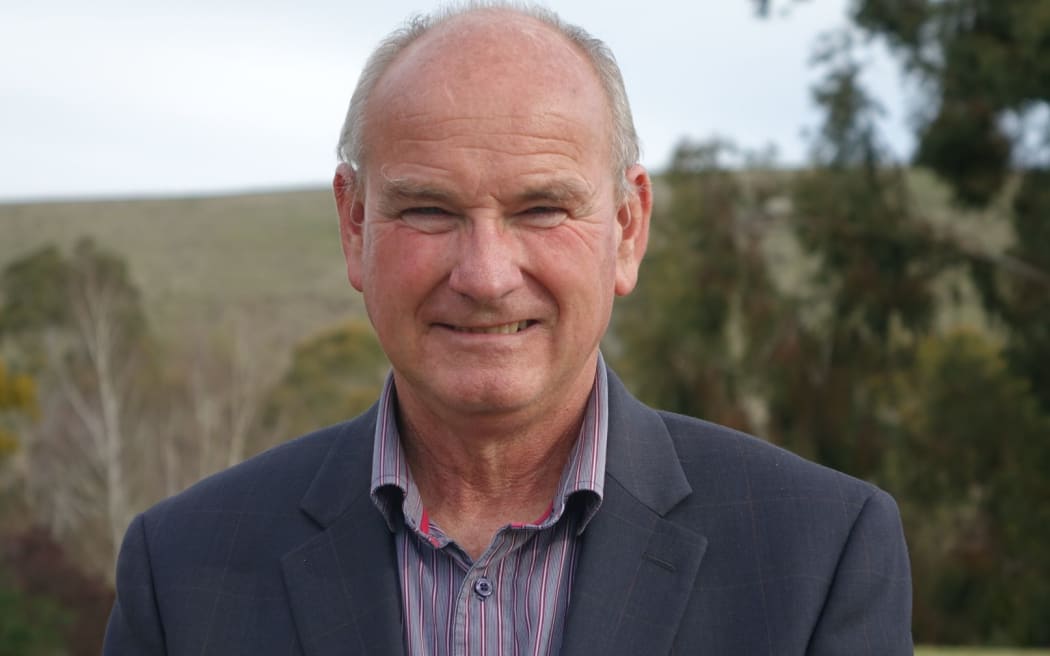
Cheviot farmer Vincent Daly was no stranger to drought, but for now, there was a lot of growth and feed. Photo: RNZ / Conan Young
Vincent Daly has been farming since the 1970s, focused on mixed crops and beef on his property in the Hurunui District. He has had two of the wettest winters he can remember.
"But it's amazing how it's dried now. Like normally, we wouldn't be drilling. We've got paddocks here that are all worked and have come up beautifully. We wouldn't be doing that usually until about Labour Weekend, and here we are [in] September, we're nearly raising dust."
He was no stranger to drought, but for now, there was a lot of growth and feed.
"We're more prepared now than we used to be. We have more stored feed. We grow more resilient crops and on this property here after we had quite dry periods in the '80s, we actually put in water storage. So we can actually do a bit of irrigation here."
Daly was also the deputy mayor of Hurunui District, and said a lot of their water schemes were for stock and the council had been making them more resilient by adding more pipes and reservoirs.
Fire and Emergency acting service delivery wildfire manager Rachael Thorp said the increased fire risk might be hard to see, but it was coming.
"Probably quite hard for people to see at the moment with the rain and the flood events that we've had over the last season. But definitely predicting hotter, drier temperatures. Bit windier than normal, than it has been over the last few seasons."
People could prepare by clearing gutters and vegetation, improving property access, making sure they have a plan of action, and planting less flammable species, Thorp said.
She encouraged people to check the MetService app for the local fire danger, saying it was handy for those planning any road trips in the warmer months.
